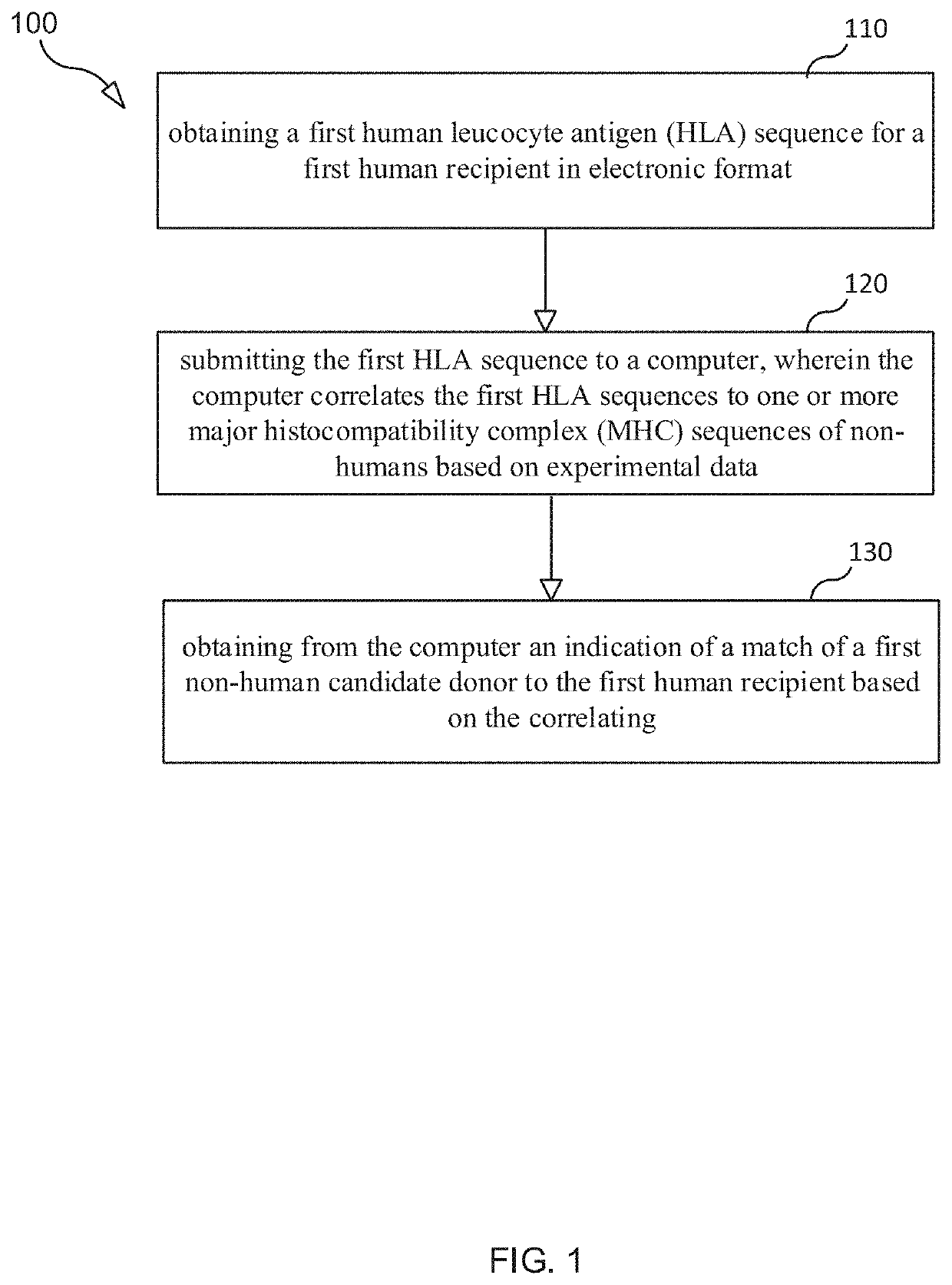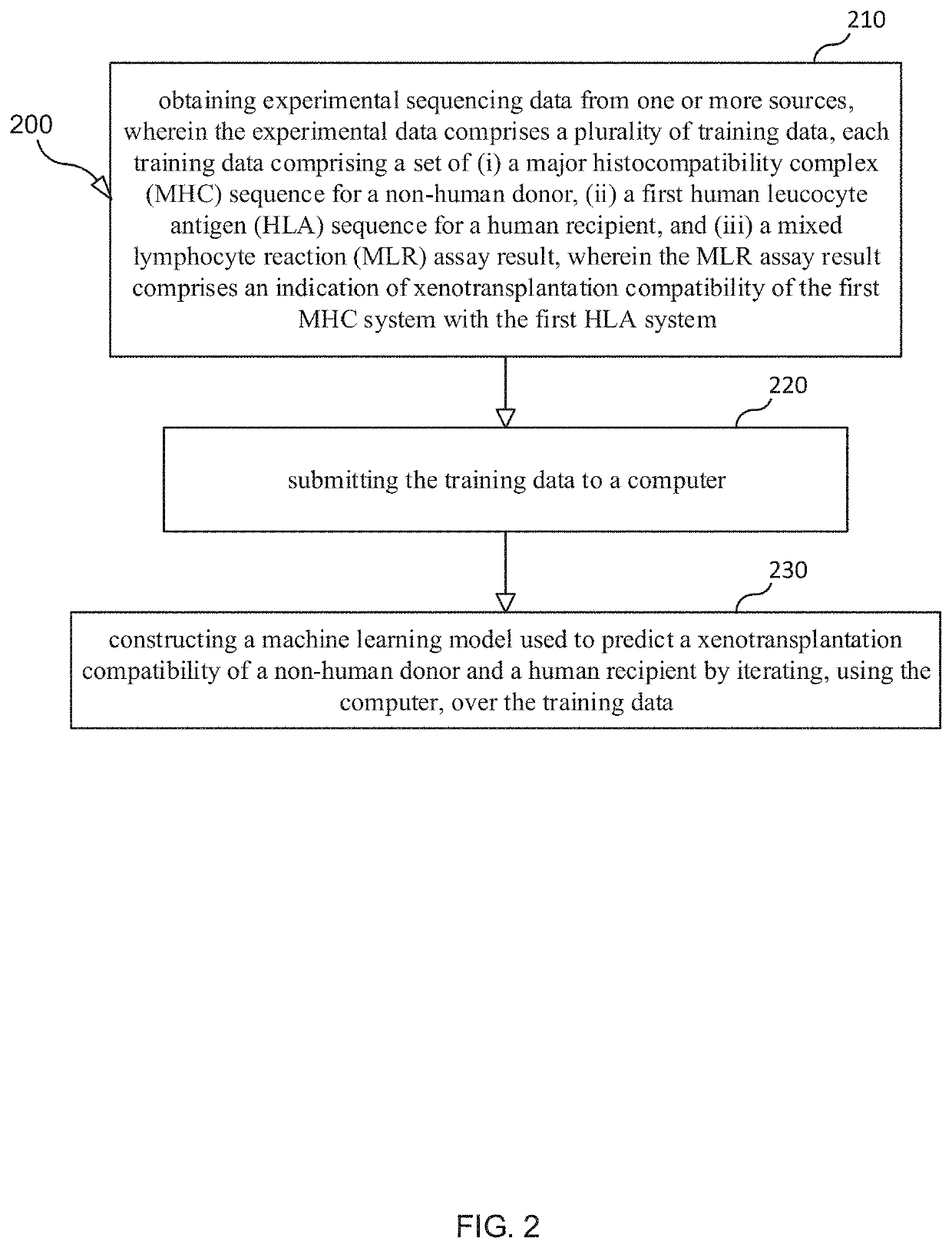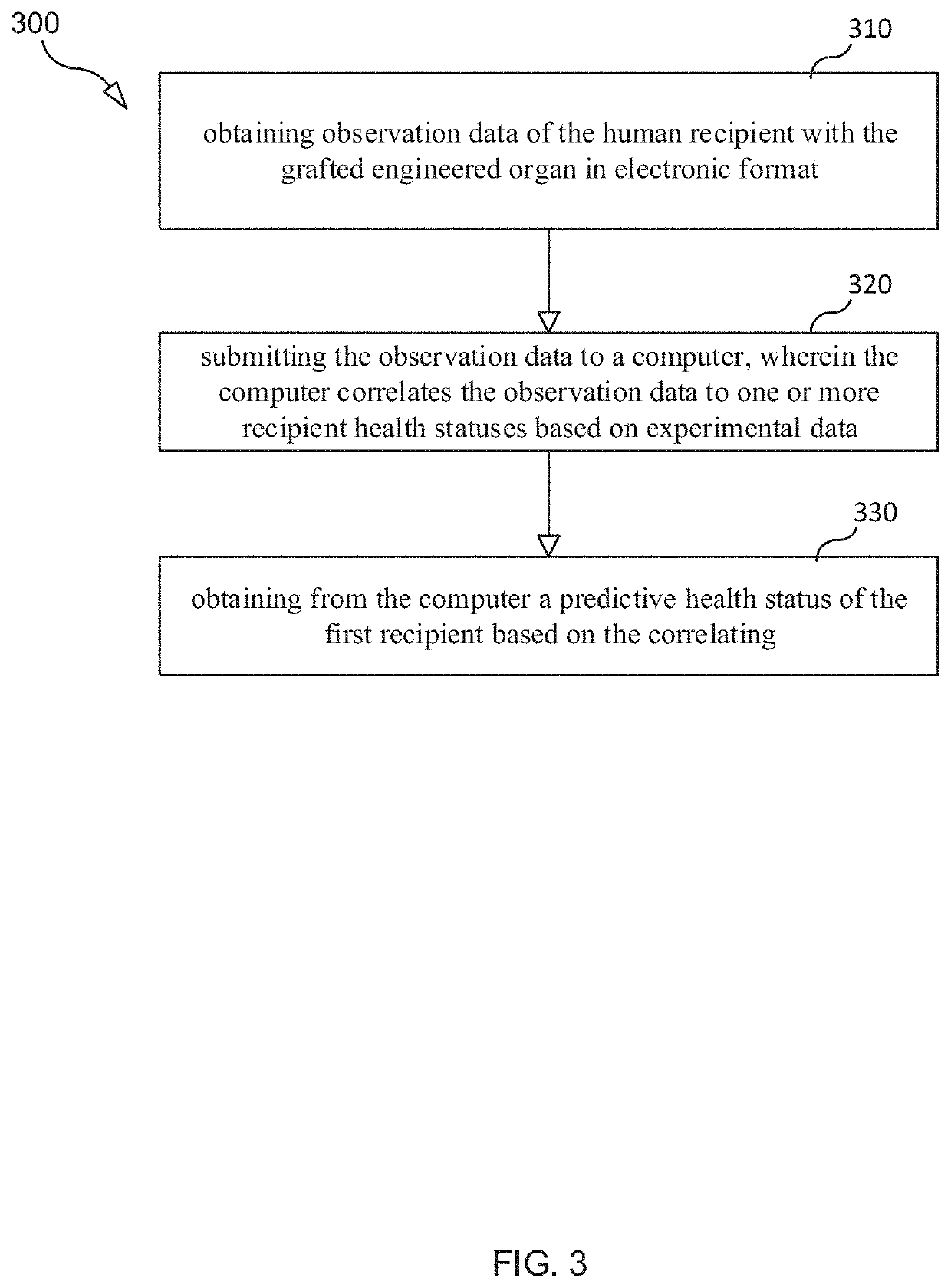Selection and monitoring methods for xenotransplantation
a technology of xenotransplantation and monitoring methods, applied in computing models, analogue processes for specific applications, instruments, etc., can solve problems such as causing cell, tissue, or organ therapy to be burdened with a heavy mutagenic load
- Summary
- Abstract
- Description
- Claims
- Application Information
AI Technical Summary
Benefits of technology
Problems solved by technology
Method used
Image
Examples
example 2
Donor Genome
[0165]There are multiple ways to approach genome editing for xenotransplantation. The starting point is one of the variations in the swine genome associated is a common breed and additional gene knockouts. The next steps require editing certain stretches of the porcine genome to insert a fragment of human DNA sequence replacing the original porcine DNA. This process may target a variety of genes. Within those genes, different loci can be targeted. All targets may differ by direct effect (the phenotype with the certain level of expression for the edited gene and the certain level of affinity of the edited expressed gene to the receptors on the cell surface that bind this gene product and affect the immune function). Targets may also be different in indirect effects, such as the risk of off-target gene modification, the severity of the off-target editing for the phenotype, a potential gain of function effects (such as humanized gene inadvertently acquiring the ability to b...
example 3
Donor Organ
[0167]The DT in this case models the function of the cell, tissue, or organ engineered and grown for xenotransplantation. The goal of this DT is to predict the immediate outcome of xenotransplantation based on the data available at the time when transplantation is required. The data for such prediction may be collected in experiments involving biopsies of the donor organ, pathology analysis of the samples of the organ and bodily fluids, transcriptome, somatic genome, metabolome, the proteome of samples relevant to the state of donor organs in a multitude of prospective donors. The data may also include characteristics of the health state of the recipient, status of the immune system, metabolic homeostasis, and other physiology and biochemistry parameters. After initial training, the DT will predict the immediate outcome of xenotransplantation such as the intensity and type of rejection, vascularization, functionality, etc. Each additional experiment will add to the knowle...
example 4
Graft
[0168]The goal of this DT may be to predict the state and function of the graft in a long term based on continuous monitoring. The DT may also recommend the course of action (medication, operation, additional tests, etc.) to improve the state of the graft or the knowledge about such a state. The data collected in monitoring may include biopsies, liquid biopsies, genome and transcriptome sequences of samples containing graft material, proteomics and metabolomics analysis of samples, assays of circulating cell-free DNA, chemical signals in blood, visual markers, etc. The outcomes may include the state of graft and recipient at certain timepoints estimated by pathology analysis, medical observation, laboratory analysis of bodily fluids, etc. After initial training, the DT will predict the graft condition at the next time point based on available data characterizing the history and current state of the graft. The DT will also predict the overall trajectory of vital parameters over ...
PUM
| Property | Measurement | Unit |
|---|---|---|
| gestation time | aaaaa | aaaaa |
| temperature | aaaaa | aaaaa |
| temperature | aaaaa | aaaaa |
Abstract
Description
Claims
Application Information
 Login to View More
Login to View More - R&D
- Intellectual Property
- Life Sciences
- Materials
- Tech Scout
- Unparalleled Data Quality
- Higher Quality Content
- 60% Fewer Hallucinations
Browse by: Latest US Patents, China's latest patents, Technical Efficacy Thesaurus, Application Domain, Technology Topic, Popular Technical Reports.
© 2025 PatSnap. All rights reserved.Legal|Privacy policy|Modern Slavery Act Transparency Statement|Sitemap|About US| Contact US: help@patsnap.com



